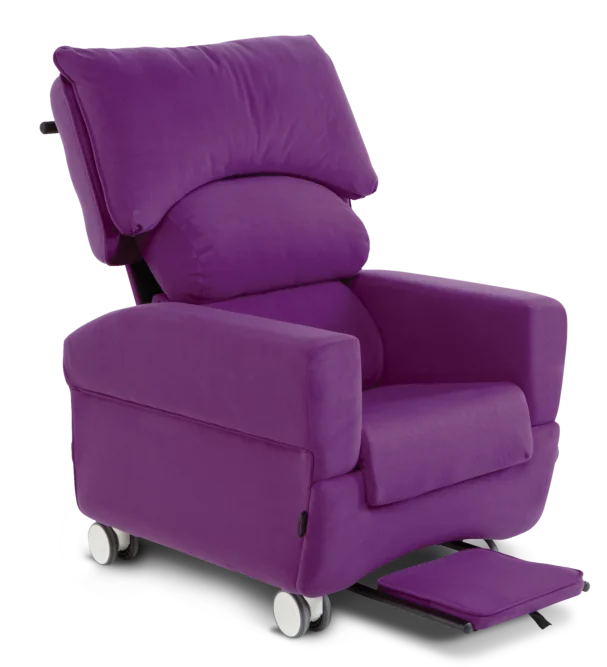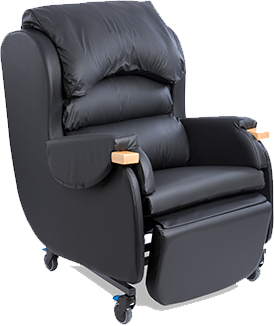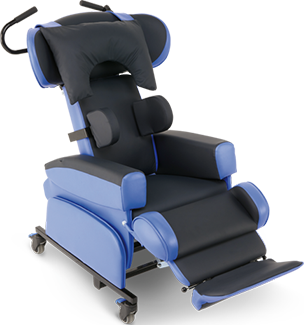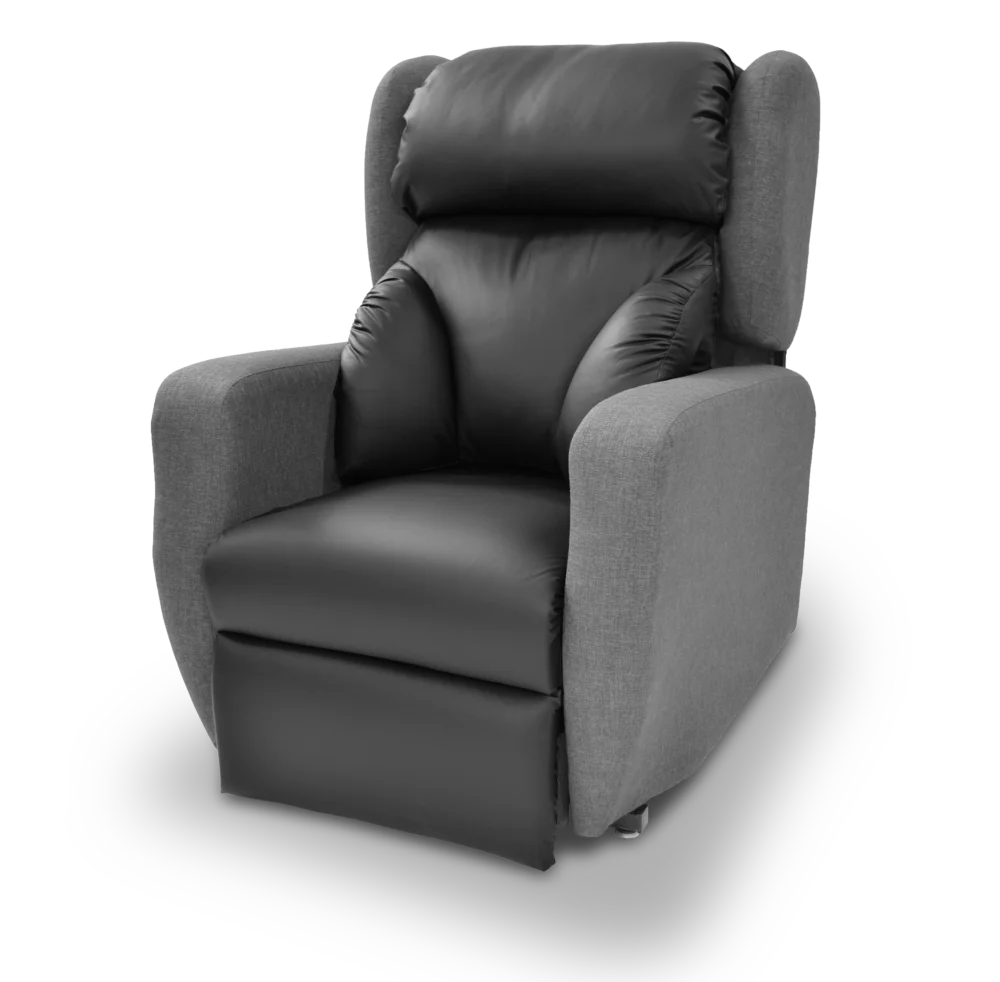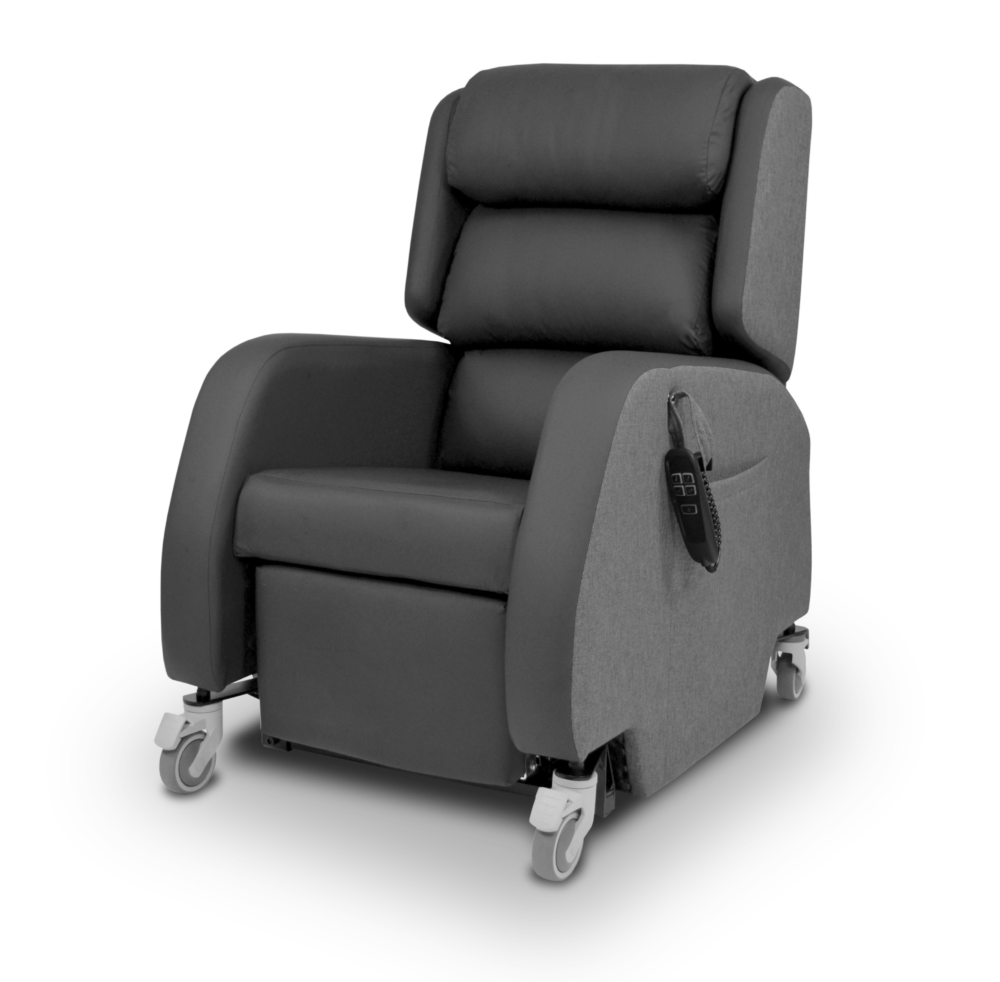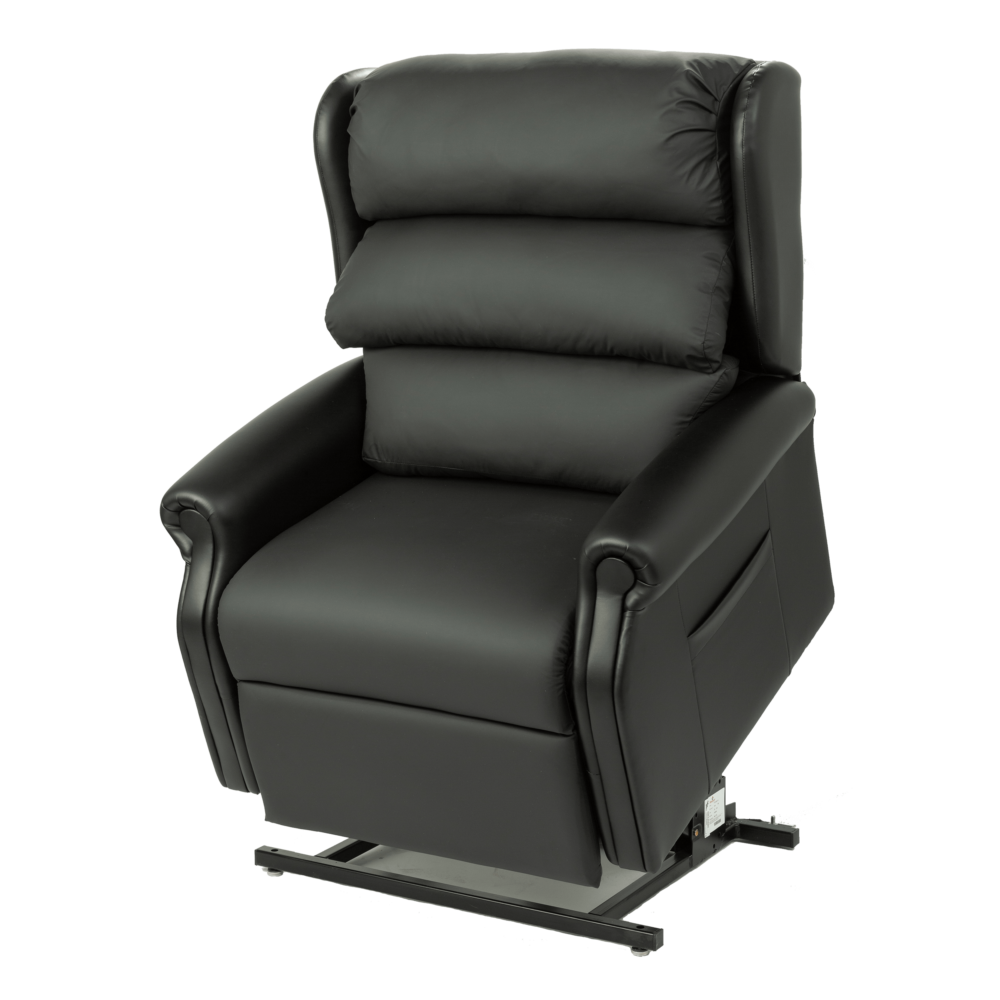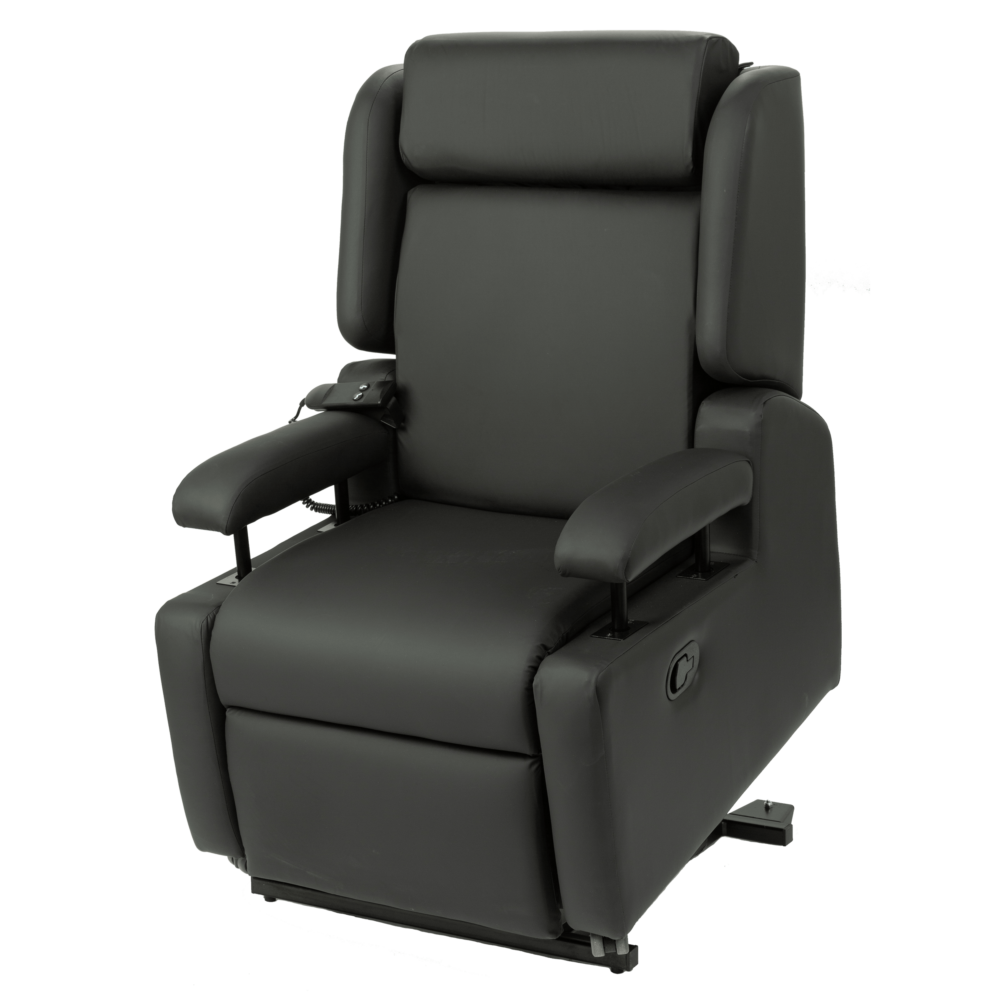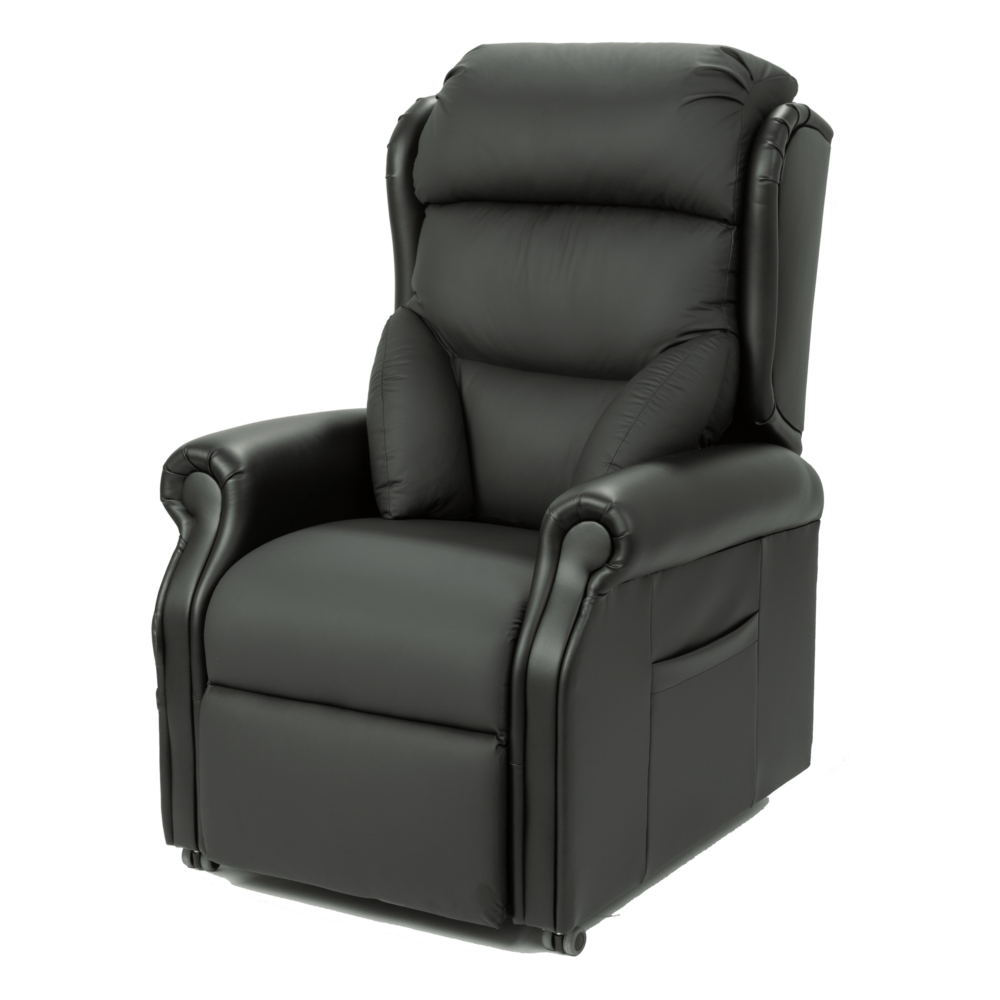Posture is the way we hold ourselves or position our body segments in relation to one another and their orientation in space1.

Good posture2:
- Facilitates effective functional performance
- Encourages energy efficiency
- Does not harm the body systems
Basics of good sitting posture3:
- The body is conformed to the supporting surface symmetrically
- Body weight is distributed equally over the maximum surface area
- A balanced and stabilised body that can adjust to change
- Body segments are supported and aligned as much as is possible
- Upper limbs are free from their load bearing role for function
During the provision of specialist seating, all body segments should be considered. With the support of a health and care professional, follow our practical tips for achieving a good sitting posture:
1. Pelvis
- The pelvis is the foundation for a good sitting posture as it dictates what happens to the body segments above and below
- The pelvis must be stabilised in all planes of movement, with consideration of posterior pelvic tilt, anterior pelvic tilt, pelvic obliquity and pelvic rotation.
- Aim to correct if the pelvis can be corrected, but remember to accommodate any fixed postures
- CareFlex offers specialist seating with tilt-in-space, ramped bases, and pelvic belts that can aid pelvic stability following a comprehensive risk assessment
- It is also crucial to ensure the back angle is set according to hip range of movement and the elevating leg rest is used appropriately according to hamstrings muscle length
2. Thighs
- The position of the thighs helps to stabilise the pelvis
- Aim to keep the thighs level so that the soft tissues on the underside of the thighs don’t become overly compressed to reduce the risk of pressure injury
- Keeping the thighs in midline with the knees positioned slightly apart will also encourage lateral stability
- Postures that can challenge thigh level, alignment and support are windsweeping and leg length discrepancies; pommels, stepped bases, lateral thigh support pads and an increased seat width can help address these challenges
3. Lower legs and feet
- Pelvic stability and trunk functionality are dependent on adequate lower leg and foot support
- Aim to align and fully support the lower legs and feet to encourage equal weight distribution
- Obesity can present a challenge in achieving optimum alignment as larger calves or oedematous lower legs can position the lower limbs too far forward restricting knee flexion
- A channeled or w-trough leg rest can help maintain alignment
- An angle adjustable foot plate may be indicated for fixed foot deformities
4. Trunk and spine
- Trunk and spine support is essential for comfort, stability and function
- Aim to fully support the trunk and align the spine as much as possible to reduce the risk of pressure injury and postural deterioration
- An unsupported trunk will require more effort from the user to maintain their position and therefore result in fatigue
- Postures that can challenge the trunk and spine are scoliosis, increased thoracic kyphosis and increased lumbar lordosis
- CareFlex specialist seating offers a range of back support options that can be tailored to the user, including flat, waterfall, contoured and articulated backs
- Lateral support, anterior support or a multi-adjustable back may be indicated for more complex postures
5. Upper limbs
- Upper limb support is essential to prevent drag and relieve stress on neck and shoulder muscles
- However, upper limb support is not there to support the trunk; adequate trunk support should be achieved first
- CareFlex arm rests offer a comfortable surface to support the arms; there is also the option to add a tray for function
- Transfer arms may be indicated for users who complete side transfers in and out of the chair
6. Head and neck
- Head and neck support is vital for breathing and safe eating and drinking
- Support is particularly important for those users who lack head control or those who fatigue
- Aim to keep the head and neck in midline so that the user’s line of vision enables interaction with their environment
- Head support can be restrictive so consideration is needed of the user’s comfort; CareFlex offers a range of head and neck support options, ranging from firm inline head rests to soft profiled head rests, that can meet individual users’ needs
- An increased thoracic kyphosis or scoliosis can affect the user’s ability to achieve alignment; an articulating or multi-adjustable back may be indicated
7. Critical angles for sitting
- It is essential that the critical angles for achieving a good sitting posture are also considered; an individual requires the ability to achieve 90° hip flexion and achieve 90° knee flexion
- This can be affected by contractures, reduced hamstrings muscle length and a posterior pelvic tilt
- Back angle recline, negative angle leg rests and chamfered cushions can help accommodate any postures affecting the critical angles for sitting, and appropriate use of elevating leg rests is essential
- CareFlex also offer a tailored solutions service for when bespoke adaptations may be required, such as a split base for fixed hip flexion deformities and a hanging foot rest for fixed knee flexion deformities
Read more on how CareFlex specialist seating can help or view our range of specialist seating products.
References
Ham R, Aldersea P, Porter D (1998) Wheelchair Users and Postural Seating A Clinical Approach London: Churchill Livingstone
Pope PM (2007) Severe and Complex Neurological Disabilities: Management of the Physical Condition London: Butterworth-Heinmann
Pope PM (2002) Posture management and special seating In Edwards S (Ed) Neurological Physiotherapy London: Churchill Livingstone

